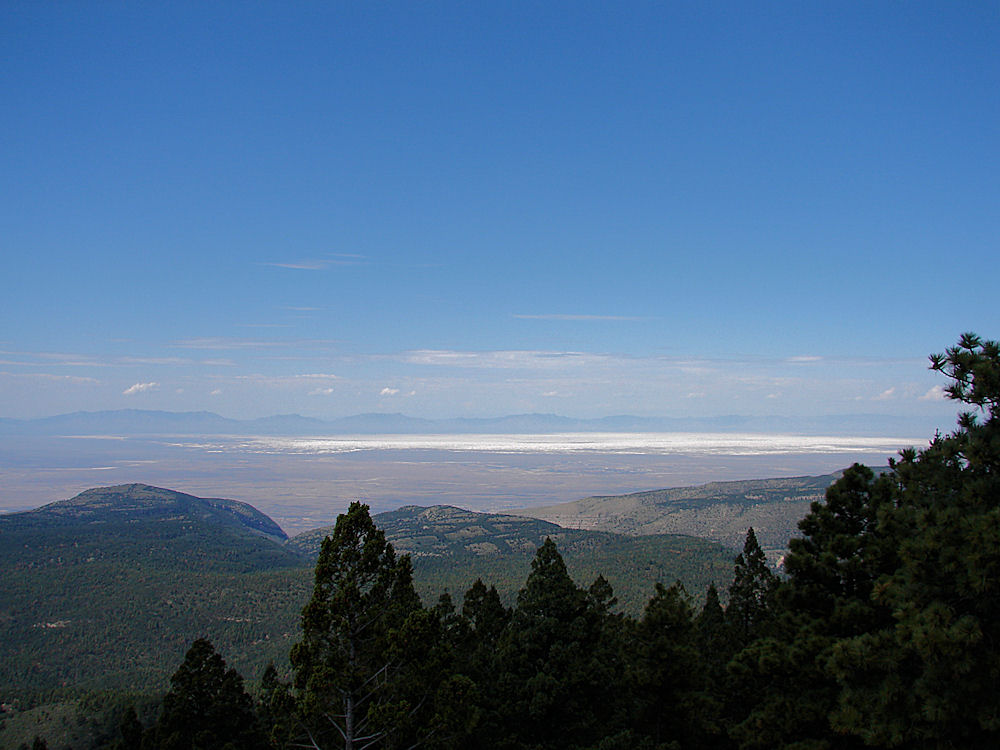 |
| NSO's two main telescopes at Sunspot, New Mexico. |
The NSO facility here at Sunspot long ago transitioned from an Air Force facility to a National Science Foundation lab, but it's two-fold mandate remains the same: predict what the Sun is going to do and explain why. The conference I'm attending is focused on connecting those two missions. But more broadly, this gets at an interesting concept in basic science, namely why do we do basic science?
One answer which we generally sell to the public is that we do science in order to produce tangible benefits - cure cancer, make faster computers, reduce pollution, etc. The other answer is that we are exploring the natural world and this is the one that researchers prefer when talking to other researchers. As far as I know nobody is opposed to either of those motivations, but there is a, of course, a question of balance.
In solar physics that balance is particularly sensitive. There is a lot of funding available for space weather monitoring from an operational standpoint. Commercial and military satellite operators, power grid controllers, those that rely heavily on GPS, and the manned space program need accurate and timely predictions about space weather. As with many complex systems sometimes it's easier and even more accurate to simply fit phenomenological models to the data rather than try to build physics-based models. In the long run, understanding the physics will provide the most accurate forecasts, but often there's a lot more short-term payoff by simply looking for patterns in the data without trying to understand them.
So this week we're trying to bridge the gap a little bit in solar physics at a place that embodies the balance. And it doesn't hurt that it's a beautiful place to visit.
 |
| View of White Sands National Monument from Sunspot. |
Sounds cool. Good luck with your workshop. I was just at White Sands and so I enjoy your picture.
ReplyDeleteJoe, I'm guessing your subfield doesn't have this problem since there isn't a lot of demand for CMB forecasts, but do you ever run into the "why are we funding this" problem? Or is cosmology so high on the cosmic sexiness ladder that no one ever questions it?
ReplyDelete"but do you ever run into the "why are we funding this" problem?"
ReplyDeleteSort of yes.
Funding in cosmology seems to be entering a new phase where, like experimental particle physics, now the only things really "worth funding" seem to be the large surveys like Planck, SPT, LSST, etc... To get a survey like this funded you have to be already big in the field and hold many conferences and bring people together and write a joint proposal with like ~100 authors. These days NASA and the NSA don't seem to have a lot of funding for any more of these in the near future and some, like LISA, are getting axed.
After a large survey is funded, people compete for getting a slice of the money. For example, I know my thesis advisor has received some money to fund grad students to do some cosmology calculations for the HST CANDELS survey and many of my "cosmology friends" are being funded by joining say SPT and proposing to do certain calculations and getting those approved.
There are some people getting money not tied to any large survey but from my experience that number is declining and unless you are attached to a survey you might be in trouble in the future.
So my point: in cosmology it seems the only things "worth funding" these days are large surveys which you either join and get a slice of the funds or the future outlook for you looks bleek.
One exception is probably large scale simulation people. There seems to be a lot of money out there to do large scale simulations whether you are attached to a survey or not.